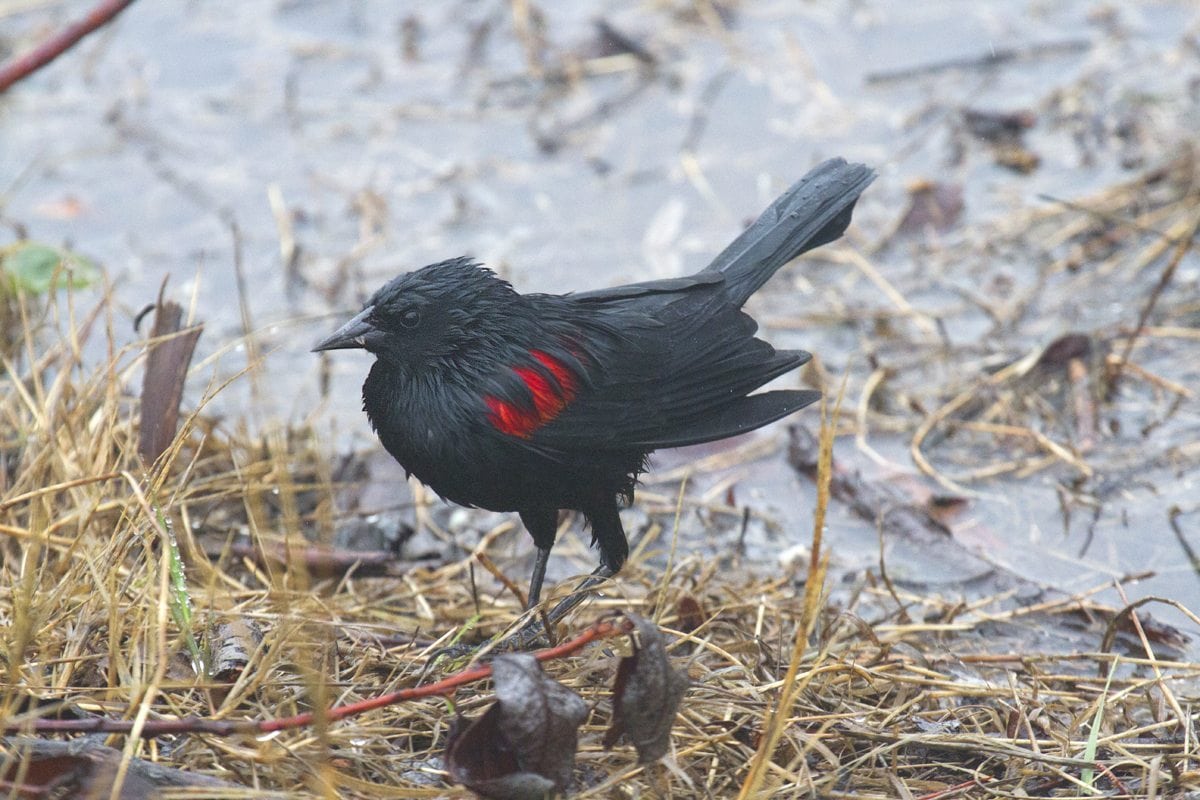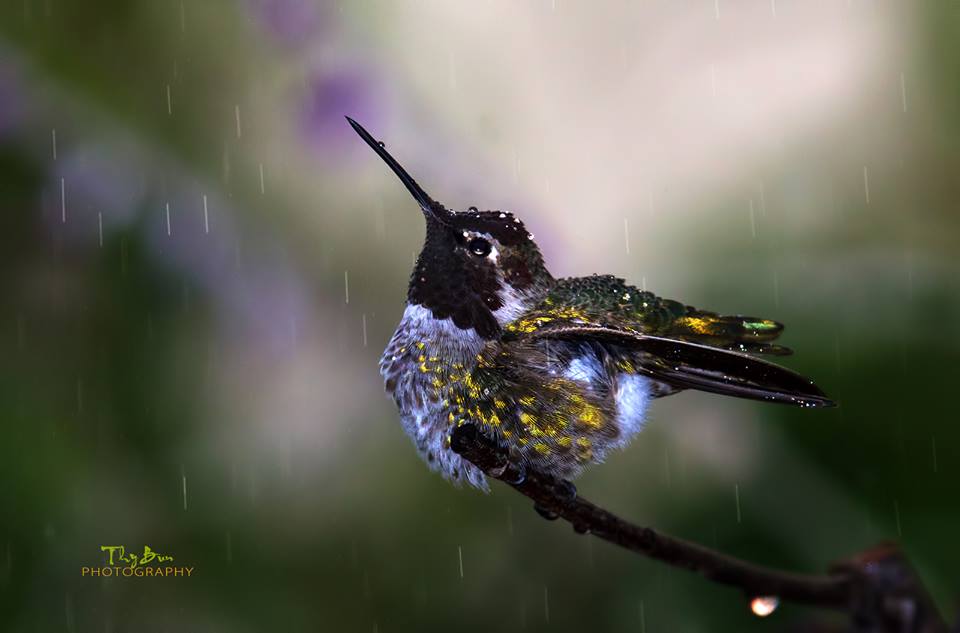What birds do in the rain
Bay Nature magazine recently ran an online column on what birds do in the rain, by San Francisco consulting naturalist Josiah Clark. We liked it so much that we’re reprinting it! (With permission of course.)
By Josiah Clark
The sea gives birth to the storm and it’s the seabirds that feel it first. With instincts any sailor would envy, seabirds sense and flee from the storm front, often arriving in numbers days before the weather makes landfall. Larger pelagic birds somehow retain their independence from land, toughing out even the most raging of storms. In these conditions it is the smaller pelagic birds that are brought to the brink. With less mass and running on tighter energy budgets, murrelets, phalaropes, and the aptly-named Storm Petrels near land are signs of an uncommonly torn-up ocean beyond the horizon.
Closer to shore, gulls, pelicans, and loons stream south over wave and bluff in a darkening sky, avoiding the worst of the storm’s wrath. But when seabirds get unlucky, exhausted, and too wet, they are at the mercy of the current. At the Golden Gate on an incoming tide it means getting sucked into the Bay. This accounts for many of the only East and South Bay records for truly pelagic birds. Despite their remarkable instincts and endurance, countless seabirds of many types perish during extreme winter storms. But only a fraction of their corpses can be found at the high tide line after any big storm.
As for land birds, if the rain is not too heavy nor too cold, most birds will keep feeding. Stalwart Christmas bird counters regularly go birding in the rain, and there is often sustained activity with plenty to look at even in heavy rain if you know where to look. But what happens to them when it’s pouring, say, for days?
The water-shedding micro-structures of flight feathers shed droplets off the birds’ back. An oil gland at the base of the tail helps keep the feathers zipped up water-tight. The inner insulating layers of down feathers are kept dry and able to be fluffed up with air, holding in body heat.

If I were a bird I would want to go inside a dry stump. As it turns out, only birds that nest in cavities are likely to have that luxury. Flocks of Pygmy Nuthatches pack into chiseled holes in dead snags like clown cars, where they seem to embody the meaning of “cozy”. They also have caches of pine seeds stashed nearby for just such an occasion.
Most songbirds have to wait out the rain perched motionless in the foliage, much as they do at night. They remain in energy conservation mode, retaining heat and energy until the rain stops. But if it does not stop, they have to feed in the rain to stoke the fire. Sparrows, finches, and other granivores seem always to be able to find seed, even finding newly deposited food on the ground. Thrushes seem especially bold in the rain. Robins and Hermit Thrushes hunt for flooded out worms and grubs or roost and feed among fruiting Toyon and Madrone.


Insectivores surely have it the worst. Their thin, athletic bodies hold little fat or heat and their diets fewer calories. Their insect prey becomes inactive and stops growing in the rain. Eventually after enough rain and wind the insects and other invertebrates are literally washed out of the trees leaving nothing to eat up there. The epitome of food stress is a flock of tame insectivores looking for dead bugs on the ground. This is the last stage of starvation before they die. During severe rain and cold in urban areas, insectivores will erupt into even the busiest streets, seeking out exotic, nectar rich blossoms where the old corpses of thrip, flies and other tiny insects remain entombed in the gummy nectar of eucalyptus, bottlebrush and albizia, among others. This would be all good except that these tiny birds are not adapted to have gummy nectar on their feathers. The signs of this “gumming” are obvious in the often encrusted faces of warblers and are presumed at least somewhat detrimental. Raptors seem as unhappy as cats in rain. They are more apt to get soaked through, relying more on their mass to stay warm. After a storm, hawks can be seen spreading their wings as depicted on totem poles. It often takes a whole day for a buteo to dry out enough to make a long flight, as the pattern clearly shows at hawk watch stations. In the absence of the larger raptors, the smaller Sharp-shinned Hawk and Merlin take center stage, merciless as they prey on yet others emboldened by food stress. In the quest for food, their prey take bigger risks, straying further and further into the open.


Waterbirds are in their element and generally thrive even in heavy rain. Ducks and waders know just what to do, leaving deeper water behind, moving into newly flooded fields and coves where new opportunities abound. They seem to relish the relative lack of predators and ability to fully utilize their marvelous adaptations to water. So what do birds do in the rain? We are so lucky right now to get to ponder the question. And as much as I have always dreamed of being a bird, as the storm rages outside I just don’t think I am that tough.
—————————-
This article originally appeared in the “Ask the Naturalist” section of Bay Nature’s web site. Bay Nature — a quarterly journal focused on Bay Area lands and wildlife — offers a $4 discount on subscriptions to Golden Gate Bird Alliance members. It makes a wonderful holiday gift (even for yourself!). To access the GGBA members’ discount code, please email Ilana at idebare@goldengatebirdalliance.org.
